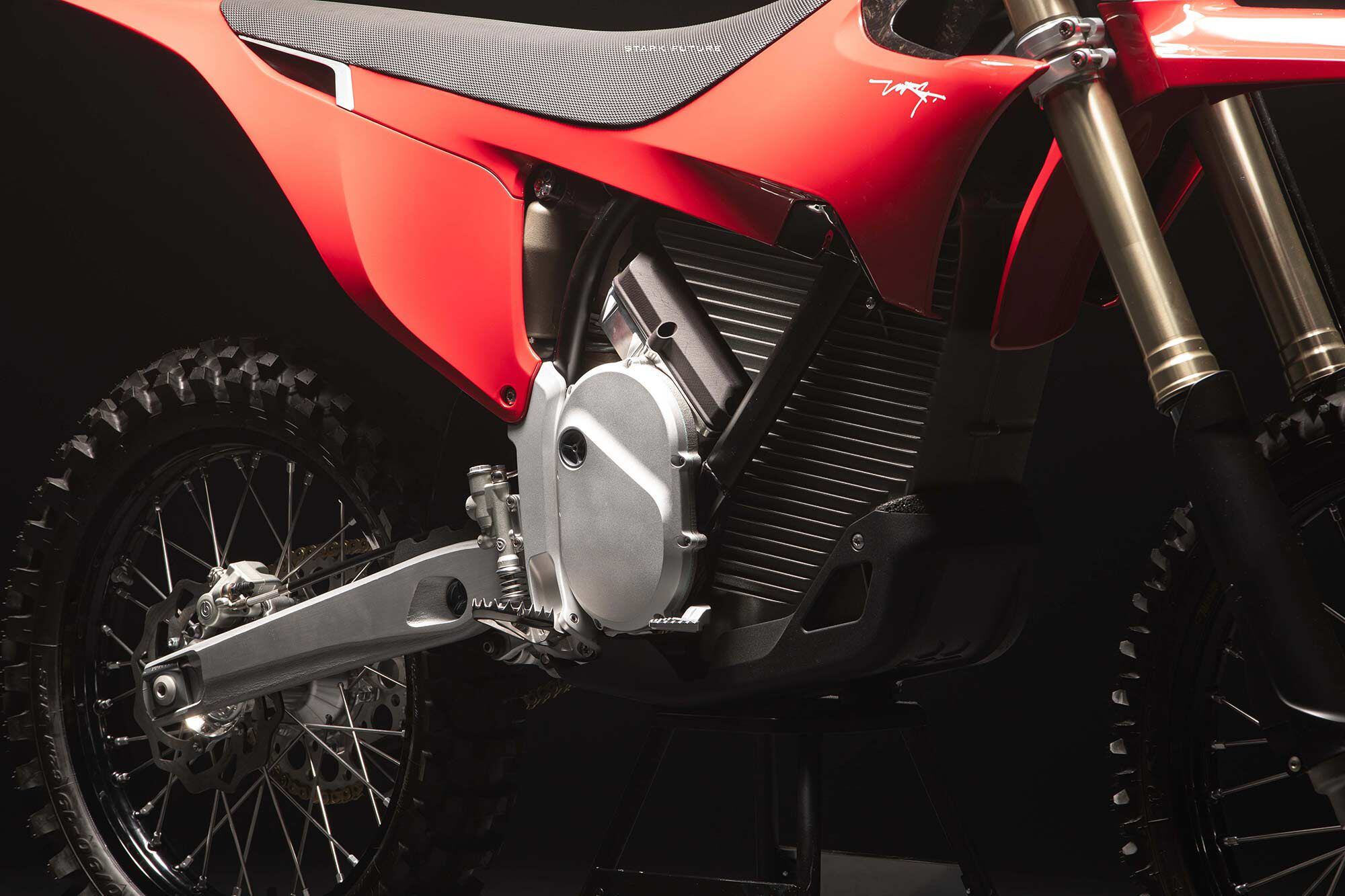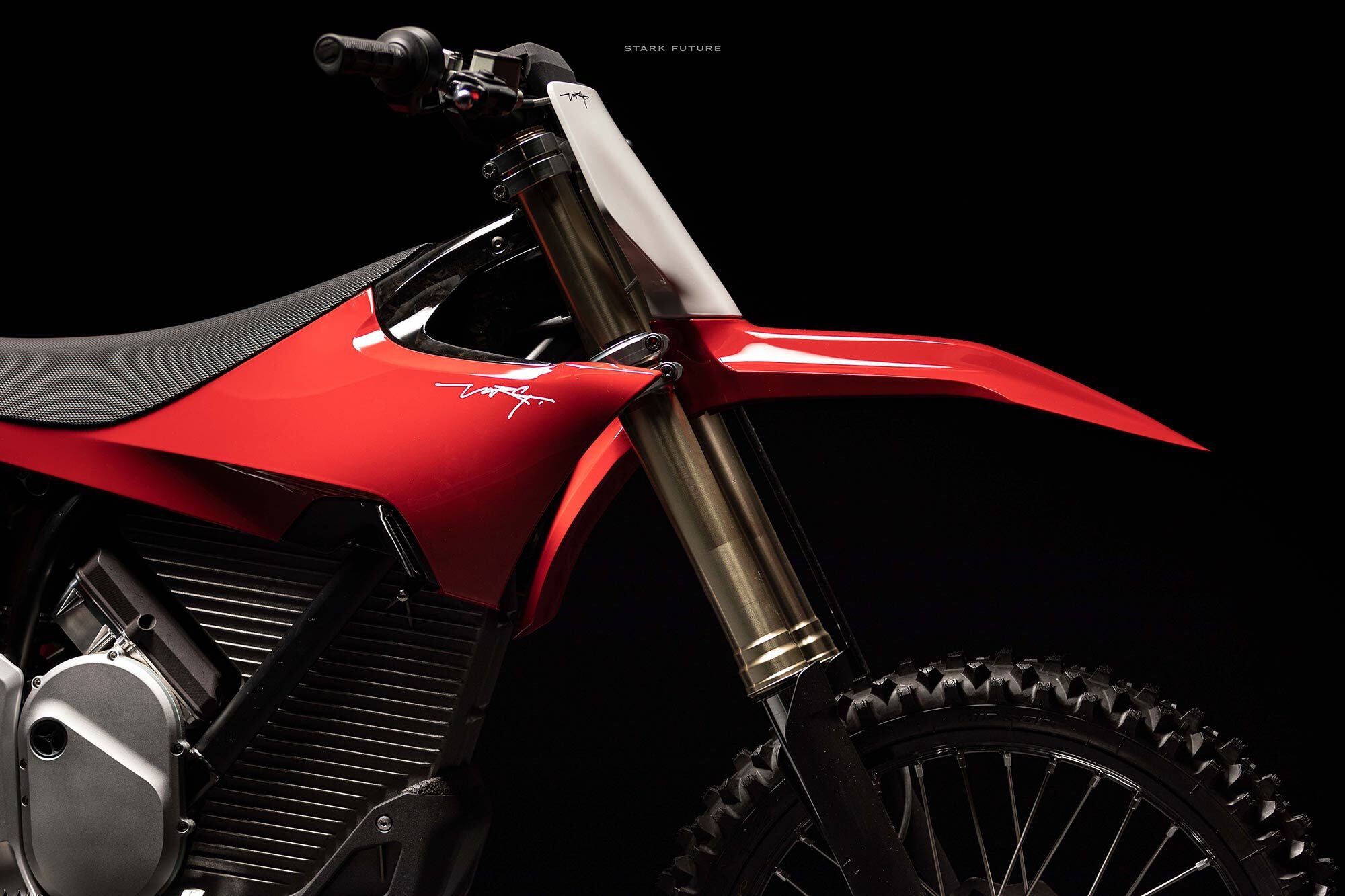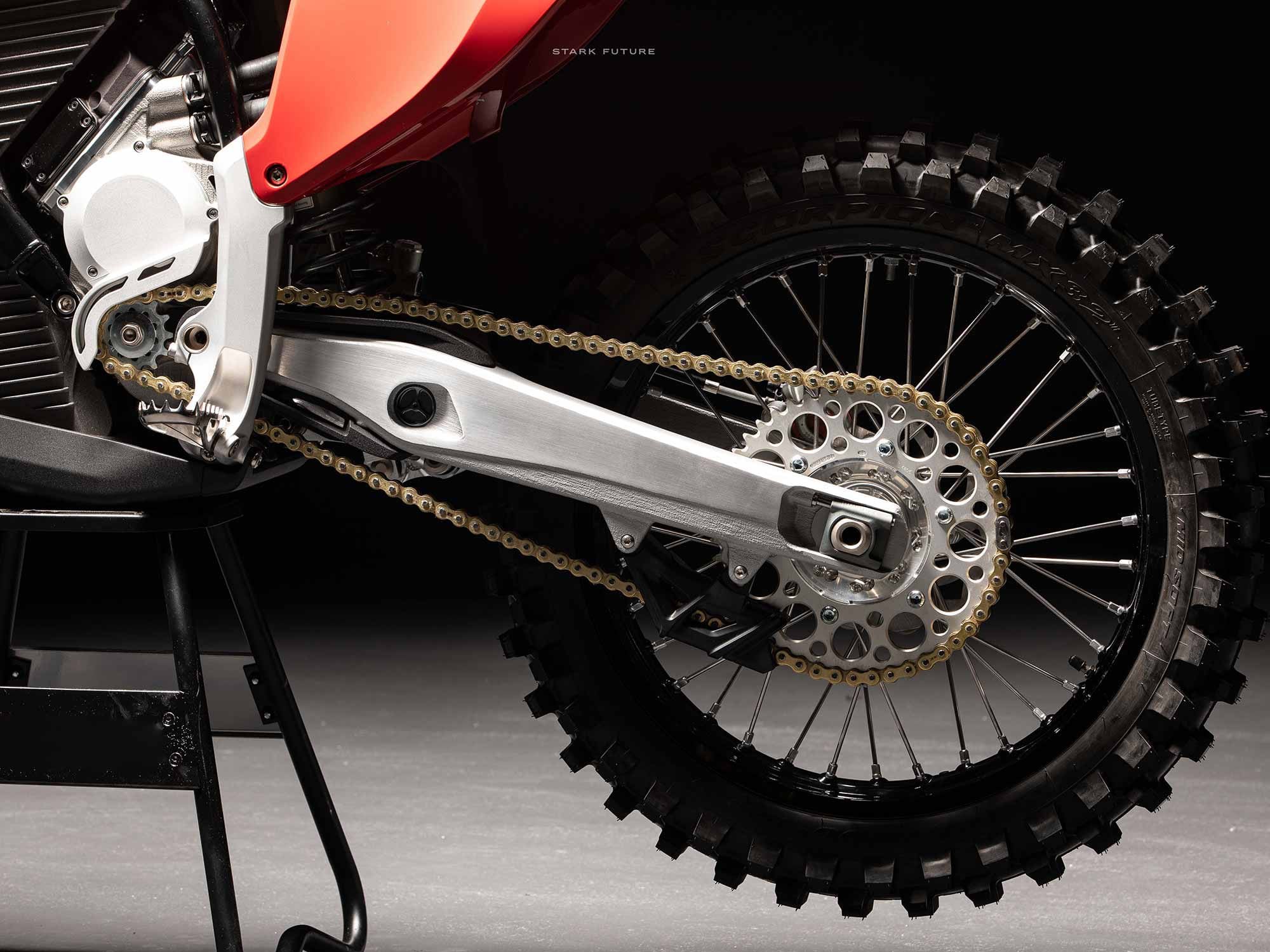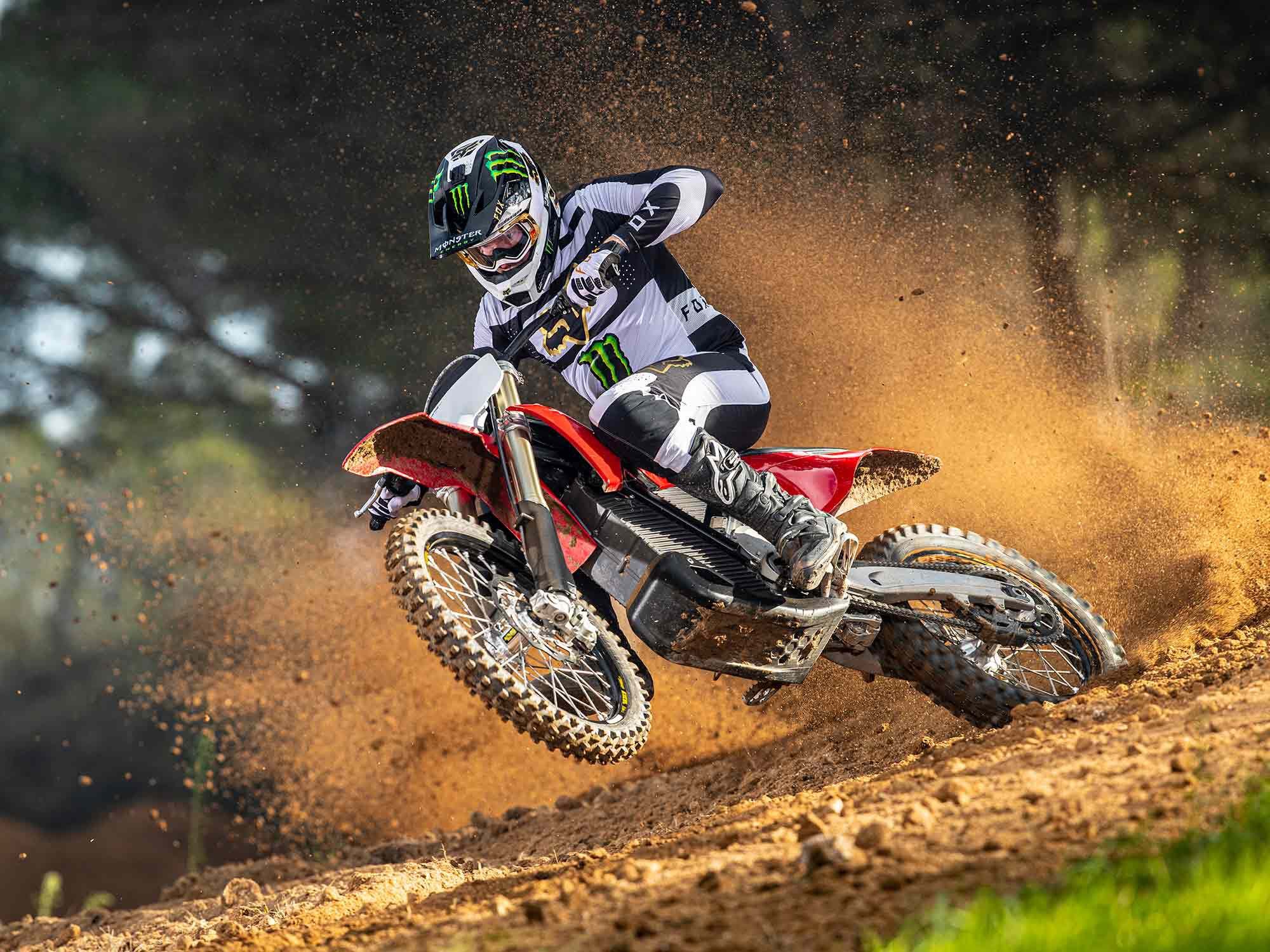/cloudfront-us-east-1.images.arcpublishing.com/octane/YVHEO2QSBFAEHNUQGLKF4EFGZA.jpg)
Development of electric-powered dirt bikes has skewed toward models aimed at youth riders with barely a handful being full-size competition machines.
Part of that has to be driven by economics as smaller bikes don’t require as much raw material. Part might be that kids aren’t as wedded to petrol power and could be more open to motorcycles that don’t sound or smell like what older generations are used to, though that’s purely conjecture.
Of the full-size electric bikes that have been offered, the limited-production Redshift by Alta Motors immediately comes to mind as the most successful race-oriented one, though photos of prototypes by the likes of Honda surfaced from time to time.
After Alta ceased operations four years ago, it was only a matter of time before someone else dared to step up with what would need to be an electric machine that brought the divergent characteristics of that genre closer to what traditionalists are used to. That machine may just be the Varg by Stark Future.
Swedish founder Anton Wass and co-founder Paul Soucy started the company months after Alta disappeared; both have motocross and off-road backgrounds in Europe and saw the void they believed they could ably fill. With the company headquartered in Barcelona (the Catalunya region widely regarded as one of Europe’s off-road riding hot spots), Stark Future’s profile declares, “The company investigates and develops the latest technical solutions for performance, mobility, function, battery power, and sustainability.” The profile adds that the founders have “an immensely successful commercial presence in motocross and the motorcycle industry.” (Quick language lesson: In Swedish, “stark”translates to “strong” while “varg” means “wolf.”)

So how does the Varg—Stark’s first serial-production offering—set itself apart?
The goal, of course, had to be lofty in that the Varg needed to outperform current bikes in every way, not just in being green.
Thus, the company hired former MX world champion and AMA Supercross winner Sébastien Tortelli as testing director. He definitely knows how a top-level bike needs to perform. As well, Stark named Josh Hill as brand ambassador.
Starting basically with a clean sheet of paper, Stark engineers designed the Varg to encompass some previously unattainable goals thanks to advances in technology. Among these is the Stark Future app that allows one to modify the power delivery with up to 100 settings available. Want to mimic a 125cc two-stroke? It’ll do that. How about a more relaxed XR650R-like ride? No problem. Current 450cc motocrosser? Easy! And with a claimed 80 hp on tap—30 percent more than any current production gas-powered 450, Stark points out—the Varg promises to easily run with them if not away. Electric motors enjoy a marked native advantage in torque and the Varg spec sheet bears this out with a listed 938 Nm, or just over 691 pound-feet of eye-popping torque if our conversion is correct!

Stark’s app allows customizing multiple engine characteristics like engine-braking, traction control, and virtual flywheel weight, according to press materials from Stark.
Preproduction testing has shown competitive battery life; when fully charged, it lasts as long as the average 450cc MXer takes to burn a full tank of gas at race pace. Naturally, the Varg battery lasts longer when ridden at less than GP-level demands, the range being up to six hours while requiring between one and two hours to fully charge.
Without divulging proprietary tech, Stark claims this is due in part to its breakthrough in battery design. Stark describes it as a “flying V” system where every cell mates directly to the patent-pending magnesium honeycomb casing which is said to be both waterproof and robust while being very light. How light? The press release lists that as 32 kilograms or 70.5 pounds for its 6kWh of capacity.
This results in high conductivity which permits air-cooling to suffice, resulting in consistent, regular battery temperature to make a liquid-cooled system—with its attendant extra parts—unnecessary.

The quest for the lowest weight possible drove the Stark design team to use the powerplant as an integral, stressed part of the chassis which employs a carbon fiber subframe. In the end, the Varg ended up with a claimed weight of 110 kilograms, or 242.5 pounds, due in part to the electric vehicle eliminating the need of a fuel tank, radiators, or liquid-cooling system. There’s also the patent-pending “floating” dual-compound skid plate that not only protects but actually replaces the lower portion of the frame. While not the absolute lightest full-size dirt bike, we can’t think of any other motocross-focused machine with 80 hp and 310mm (12.2 inches) of wheel travel.
Stark fitted the Varg with first-class KYB suspension components and developed settings with Technical Touch out of SoCal. To simplify rider setup, there are seven different settings to choose from, though further valving and spring changes can be done by any qualified technician, of course.
Other quality components include the Varg’s wheels with CNC-machined hubs out of 6082-T6 aluminum, 7050-T6 rims, Italian steel spokes, and Pirelli MX32 tires. The chain-adjustment system is unlike any other with a unique “click” system that eliminates the need to measure, say, swingarm pivot bolt to rear axle center. Stark also developed a mounting system for the pegs that gets rid of the usual lock pin with the pegs themselves cast of a special stainless steel claimed to be 40 percent stronger than titanium or chrome-moly.

“When I first jumped on the Stark Varg, it was a step into the unknown,” Tortelli acknowledges. “The very first impression was from the outright performance—it was much more than I expected! Suspension-wise, chassis-wise, I felt immediately at home.”
Hill adds, “The designers have done an amazing job with the chassis and the ergonomics right out of the gate. There was very little to adjust. I also love the ‘one size fits all’ idea: Someone with very little experience on a dirt bike can feel safe and have fun—especially compared with trying to get their head around a new 250 or 450—but then the serious racers or free-riders can make it as explosive as they want.”
In conclusion, the Varg buying experience is as unique as the bike itself. While Stark Future is developing its dealer network, interested parties can also order the bike online (starkfuture.com) for $11,900.
